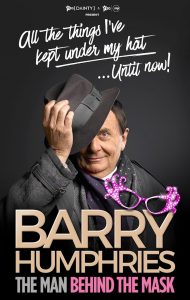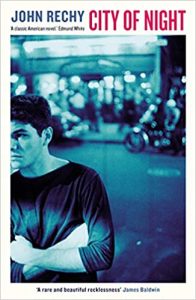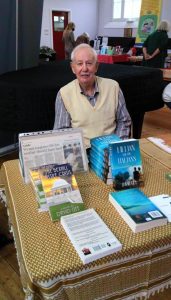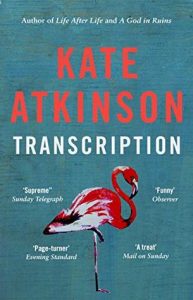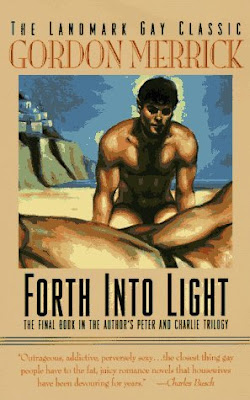Author: davidgeebooks
David at the theatre: Edna’s comeback – she never went away!

In 2013, on Dame Edna’s “Farewell Tour”, Les Patterson and the lady herself tottered onto the stage of Brighton’s Dome gasping for breath. I half expected to see one of them die on stage, like Sid James or Tommy Cooper. But last night Barry Humphries toddled onto the stage of Eastbourne’s Devonshire Theatre, seemingly sprucer than ever at the age of 88.
This is not (not quite) the Les and Edna show; this is the ‘Making Of’ show, with Humphries talking about his early life in Melbourne and the ‘conceptions’ of Dame Edna as a send-up Australian housewife and Sir Les as a drunken Events Director who got promoted to Cultural Attaché. These two long ago took on lives of their own and are now much-loved figures on the global celebrity circuit.
Humphries talks candidly about his boyhood and his near-fatal struggle with alcoholism. If there was one jarring note last night, it was his quizzing members of the audience about their bathroom decor: cringe-making when Edna does it, this doesn’t work when performed out of Edna costume. Throwing ‘gladdies’ was probably another misjudgment, especially without inviting the lucky recipients to wave them during the closing song.
Overall, the evening was a joyous reunion with Edna and Les – in hilarious video clips, including Edna’s naughty invasion of Charles and Camilla’s box at the the Royal Variety Show in 2013 (www.youtube.com/watch?v=1r3S5UKP7ME).
The Barry Humphries show is touring. Don’t miss it if it’s anywhere near you. Newsflash: we are promised another ‘Farewell Tour’ next year. Edna may take as long to leave the stage as that earlier Australian diva, Dame Joan Sutherland!
What I’m reading: Gay icons resurrected

Peter Scott-Presland: A GAY CENTURY
This is a collection of ten short plays, designed to be performed as mini-operas. I watched several of them, played but not sung, on Zoom last year. They each encapsulate a chapter of gay history, revisited or re-imagined. All of them are clever and interesting. They are all good. A few of them are outstanding. My absolute favourite is the first one, Two Queens, set in 1900, in which Queen Victoria visits Oscar Wilde on his deathbed in Paris. Her Majesty is given liberty to borrow some of Oscar’s most famous lines!
Wilde (or his ghost) pops up in some of the later dramas, affirming his role as the “patron saint” of gay liberation. EM Forster, Siegfried Sassoon. Noel Coward – many iconic gay figures of the century are here, revisited or re-imagined. Radclyffe Hall supplies, rather earnestly, the L in LGBT. Ivor Novello, sentenced to prison for fiddling petrol coupons during WW2, shares a cell with a psychotic gangster. The Jeremy Thorpe scandal is re-interpreted with Norman Scott’s dogs given voices and a key role! There’s an episode in Weimar Berlin that features Gerald Hamilton, said to be the inspiration for Christopher Isherwood’s Mr Norris; the play is a splendid ‘companion piece’ to Cabaret; I’d love to hear it sung.
Peter Scott-Presland has risen splendidly to the challenge of giving historical characters an ironic and incisive new script (to sing!). A Gay Century is a towering achievement. And Volume Two is due out soon.
What I’m reading: A hustler’s odyssey in pre-Aids America
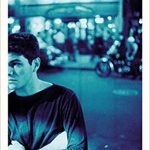
John Rechy:
CITY OF NIGHT
Resuming my trawl through yesteryear gay fiction with this ‘classic’ from 1963, John Rechy’s chronicle – which we assume to be autobiographical – of a few months in the life of a nameless hustler haunting the cruising zones of New York, Los Angeles, San Francisco, Chicago and Mardi Gras New Orleans. It seems a bit dated today, but it’s one of the seminal books in the literary gay canon.
Rechy sets the tone on the opening page: “One-night sex and cigarette smoke and rooms squashed in by loneliness.” Every other chapter explores the life and mindset of a fellow hustler or one of the punters (“scores”), those men who are part predator and part prey. There is some humour, especially in the full-on Attitude of the camper gays and drag queens – the most extravagant of these are Miss Destiny, the self-crowned Queen of L.A.’s Pershing Square, and Chi-Chi, a mixed-up Muscle Mary in New Orleans. But for the most part the tone is unremittingly bleak. Sylvia, the bar-owner haunted by a guilty secret, is given more depth than many of the scores.
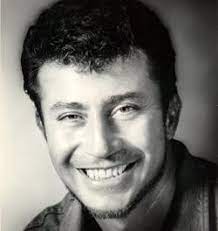 |
| John Rechy |
The narrator portrays himself as the macho street kid who’s only doing it for money but occasionally, with another hustler or one of the scores, he almost feels the tug of involvement. But that tug has to be resisted, because it would undermine his conviction that he isn’t really a fag. These are some of the book’s most revealing scenes. He never admits to love and only rarely to desire. Desperation is what drives the denizens of the Cities of Night onto “the lonely, crowded, electric streets.”
John Rechy creates a syntax of his own, routinely omitting the apostrophes in words like “isnt” and “dont”. Fragmented paragraphs bristle with dashes and ellipses (…). Past and present tenses are randomly mixed. He sandwiches words together to create a vivid new vocabulary: “nightworld”, “malehustler”, “sexhungry”. The hallucinatory writing recalls Jack Kerouac and William Burroughs, so much so that I wonder if either of them contributed to the edit. The fractured narrative becomes repetitive, but there’s no denying the powerful impact of this nightmarish journey through the Gay Underworld. “We’re trying to swim in a river made for drowning.”
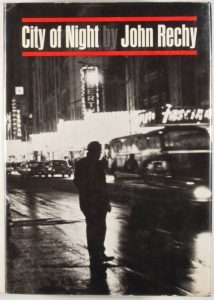 |
| the original 1960s cover |
This is not an erotic novel. The sex between hustler and score is rarely described and never detailed. Rechy’s second novel – Numbers – and its successors were a lot more explicit, and he abandoned the zonked-out Beat-poetry style for the pared-down prose of Harold Robbins or Mickey Spillane.
Reading City of Night in the 1960s, it seemed exotically different and daring. London’s gay scene was a pale echo of New York’s; Piccadilly and Leicester Square never quite had the lurid tawdriness of 42nd Street or Times Square. A few pages from the end Rechy seems to foresee the rich harvest the Grim Reaper will gather from this relentlessly promiscuous community two decades later: “death lurking prematurely in a threatening black-out”. In 1963 John Rechy was a kind of “Pied Piper” figure, and as we know, the Piper – one way or another – has to be paid.
What I’m reading: An ending that will stay with you forever

DELIA OWENS: Where the Crawdads Sing
I’m a couple of years late reading this novel, which is surely set to become a modern classic. Abandoned by her mother and her siblings, Kya Clark grows up in a shack in the North Carolina marshes with only her brutal alcoholic father for company until even he disappears. Scorned by almost all the townspeople, she gives up on school after just one day. A local boy teaches her to read; they both become experts on the flora and fauna of the swamp and the ocean. When the boy leaves to go to college, Kya replaces him in her affections with a rich-kid lothario who we know from the beginning is destined to die under mysterious circumstances.
Delia Owens brings the marshes and the creatures that live there vividly to life. She has a wonderful way with words: ‘Barkley Cove served its religion hard-boiled and deep fried.’ Inevitably, Where the Crawdads Sing brings echoes of other great writers from the Deep South, notably Harper Lee and Truman Capote. The rustic courtroom scenes have all the drama and tension of To Kill a Mockingbird.
More than once this heartbreaking story of love and loss brought tears to my eyes. The ending is one that will stay with you forever. This is without doubt one of the finest novels this century is likely to produce.
LILLIAN AND THE ITALIANS: Two more reviews on my Blog Tour

Two five-star reviews I garnered during my US Blog Tour with Gay Book Promotions this week:
What I’m reading: The very best of English writing

Kate Atkinson: TRANSCRIPTION
Eighteen-year-old Juliet Armstrong takes a job with MI5 in 1940, typing up tedious transcriptions of the monitored conversations of Nazi sympathizers. She also infiltrates their ranks as a ‘fifth columnist’. It takes her a while to realize that one of her team is a double agent and even longer to do something about it. The operation leads, more or less accidentally, to two murders.
A decade later, Juliet is a junior producer with children’s radio at the BBC. An anonymous letter threatens consequences from past events. As more of that past is revealed, Transcription acquires increasing hallmarks of a spy thriller, although the author’s sprightly prose means that comedy overtones accompany even death and burials. “They were at a loose end without a funeral tea to go to. Poor Joan didn’t seem entirely dead without a glass of sherry and a slice of Dundee cake to send her across the Styx.”
As in Atkinson’s previous novels, the writing is crisp and witty, often aphoristic, with pleasing echoes of the late great Muriel Spark and even Alan Bennett. The ending – and a fascinating Author’s Note – provides a splendid surprise and a resonance with one of history’s greatest spy scandals. Kate Atkinson is without doubt one of our finest current writers.
* * *
From the SUSSEX EXPRESS and HASTINGS OBSERVER – this week

Newhaven author David Gee is in print with Lillian And The Italians, published by The Conrad Press, Canterbury at £9.99 paperback, £3.99 Kindle, available from Amazon and bookshops – a book about second chances.
David Gee is the pen-name of David Helsdon, aged 78. He says: “I set out to write a novel in which a widow gets a second bite of the cherry.
“Searching for her wayward son Andrew in the summer of 1966, Lillian Rutherford, a 50-year-old widow from Hastings, goes to Venice, where she meets the ex-gigolo who has shared the last four years of Andrew’s life. His revelations about Andrew’s bisexuality shock her.
“Going on to Amalfi, she meets Prince Massimo Monfalcone, whose playboy son has disappeared with Andrew.
“Massimo distracts Lillian with his life story: his first wife was murdered in a Sicilian blood-feud; his second wife killed herself because of his infidelity. As they wait for news of their sons, a bond grows between Lillian and the prince. A different world – a different life – opens up for her. Is she ready for this?
“The book will, I hope, appeal to women of all ages. Lillian learns in Venice that her son has had male as well as female lovers, so I hope this will draw in LGBT readers. Prince Massimo’s life includes 50 years of Mafia history, so maybe fans of The Godfather – and movie producers! – will be attracted.
“Lillian and the Italians is a book for women who worry that their lives will flatline after their children – or their husbands – leave home.
“I promised my mother years ago that I would write a novel in which an English widow finds romance and adventure in Italy. Lillian’s girlhood and a late-term miscarriage are taken from my mother’s life story, although she was widowed at an earlier age and fate did not bring her a Sicilian prince; Alzheimer’s took her down a different road. Lillian and the Italians is the life she should have had.
“My mother accompanied me on some of my research trips to Venice, Amalfi and Sicily. The first draft of the book was largely written on location, in cafes and bars and sitting on church steps.
“I started it in 1976 but then my job took me overseas and I didn’t finish it until the 1990s. I’ve had to overcome a surprising amount of resistance from editors and literary agents to a book with a heroine aged fifty; they prefer a book with a sexy young bimbo!
“I’ve started a follow-on novel in which Lillian’s son’s life intersects with a hotel owner from Hastings in Spain in 1968, the year of student protests in Europe and anti-war protests in the US. Hopefully it will soon be possible to fly to Spain for some location research. For now I’m relying on memories of my first visit to Benidorm in the 1960s when Benidorm had had an unfinished promenade and very little highrise – not the Benidorm we know today.”
This link will take you to the full article online:
https://www.hastingsobserver.co.uk/arts-and-culture/books/east-sussex-author-pens-the-life-he-wished-his-mother-had-led-3267700
LILLIAN’s BlogTour hits the USA

Review from Allison D:
There is a bit of mystery throughout, as her son continuously eludes her for nearly the entire tale, (not necessarily of his own doing), a Prince who Lillian develops a very comfortable bond with and then…..Italy. Beautiful, beautiful Italy and her Amalfi coast and her food, her drink, her coastline and her amazing history. Venice, and sailing and afternoon naps in the sun. The loud, loving Italians, living life to the absolute fullest.
I normally do not read men authors. And certainly not when the main character is a woman. This was written quite well, though. Gee was able to (I think) correctly capture the spirit and attitude/behaviors of a 1960’s woman, traveling to another country in search of her son. Her life has changed dramatically- she has lost her husband and in a way, her purpose. Her daughter is off in Hong Kong raising her own family, and Lillian seems a bit….restless. What does life have in store for her now?
As she spends more time in Italy, the friendship between Lillian and Prince Massimo is a bit convenient, but it is played out nicely. (No spoilers here, folks.) I want to say SO MUCH MORE about this storyline, but will simply say I liked the way it was tied up at the end.
My favorite character- by far- was Italy. This book was the PERFECT read for me this month, as I am deep into researching the Italian side of my family tree. The descriptiveness that Gee bestows on his readers is remarkable. I could taste the wine, I could feel the sun toasting me to a golden brown. I could hear the water and see the beautiful sights of Venice. If I did not want to travel to Italy before, I certainly do now!
For me, the book was a straightforward story of a mother who starts out on a journey to find her son. What she doesn’t realize is she will find out a lot more than where he has been for the past 4 years, and will find herself along the way as well.
What I’m reading: Gay porn and Barbara Cartland
Gordon Merrick: FORTH INTO LIGHT
Originally published in 1974, this concludes the gay trilogy that began with The Lord Won’t Mind. Painter Charlie and art-dealer Peter are spending another summer in their Greek island villa with Martha, by whom they have each fathered a child. Martha is not the only woman in their life: art historian Judy arrives to consult Peter about some paintings that may be fakes. She inspires a heterosexual hiccup in Peter.
The paintings have been bought by celebrated New York author Mike who is on the island visiting his friend George, a not-so-celebrated author with a drinking problem and a rocky marriage. George’s teenage son Jeff thinks he may be gay and develops crushes on Mike and our two heroes (and one of the natives).
 |
| Gordon Merrick |
Large dollops of sex are duly introduced as Jeff works his way through his crushes. And Peter consummates his heterosexual hiccup with Judy in scenes that veer between Barbara Cartland daintiness – “He opened his mouth, and she gave him hers” – and cinematic hardcore. Charlie is not simply well-hung; his endowment is “prodigious”. Graphic – not to say pornographic – sex is Gordon Merrick’s trademark, though I wonder if gay and straight porn belong in the same book: is there a demand for “bi-porn”?
Aside from the sex, which comes close to the “classic” turgidity of the Song of the Loon trilogy, the book consists of long – even tedious – conversations about love and fidelity. There’s a “MacGuffin” involving a missing wad of dollars which, with the extended dialogue, has echoes of one of Terence Rattigan stodgier dramas. The debate about the “openness” of many gay relationships is an interesting one, to which Merrick makes a thoughtful contribution. Forth Into Light brings his ultra-erotic trilogy to an uneven climax (if I may use that word).
